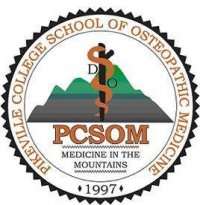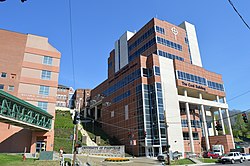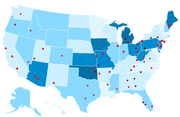The Association of American Medical Colleges (AAMC) is a nonprofit organization based in Washington, D.C. that was established in 1876. It represents medical schools, teaching hospitals, and academic and scientific societies, while providing services to its member institutions that include data from medical, education, and health studies, as well as consulting. The AAMC administers the Medical College Admission Test and operates the American Medical College Application Service and the Electronic Residency Application Service. Along with the American Medical Association (AMA), the AAMC co-sponsors the Liaison Committee on Medical Education (LCME), the accrediting body for all U.S. MD-granting medical education programs.

The Edward Via College of Osteopathic Medicine (VCOM) is a private medical school on the campus of Virginia Tech in Blacksburg, Virginia (VCOM-Virginia), with branch campuses in Spartanburg, South Carolina (VCOM-Carolinas), Auburn, Alabama (VCOM-Auburn) and Monroe, Louisiana (VCOM-Monroe). VCOM also recently added Bluefield University to its list of campuses. Founded in 2002, VCOM graduated its first class of 139 students in June 2007.
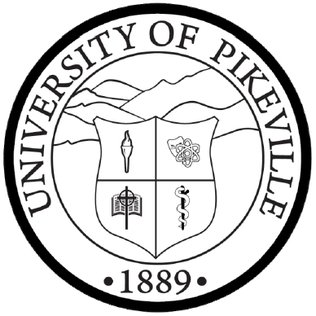
The University of Pikeville (UPIKE) is a private university affiliated with the Presbyterian Church (USA) and located in Pikeville, Kentucky. It was founded in 1889 by the Presbyterian Church and is located on a 25-acre (10 ha) campus on a hillside overlooking downtown Pikeville.
Pre-medical is an educational track that undergraduate students in the United States pursue prior to becoming medical students. It involves activities that prepare a student for medical school, such as pre-med coursework, volunteer activities, clinical experience, research, and the application process. Some pre-med programs providing broad preparation are referred to as “pre-professional” and may simultaneously prepare students for entry into a variety of first professional degree or graduate school programs that require similar prerequisites.

The Medical College of Wisconsin (MCW) is a private medical school, pharmacy school, and graduate school of sciences headquartered in Milwaukee, Wisconsin. The school was established in 1893 and is the largest research center in eastern Wisconsin. It is associated with Froedtert Hospital as well as Children's Hospital of Wisconsin and houses the Center for Infectious Disease Research There are two additional campuses, one in Green Bay and one in Wausau.
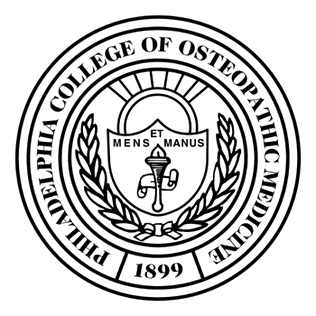
Philadelphia College of Osteopathic Medicine (PCOM) is a private medical school with its main campus in Philadelphia, Pennsylvania, and additional locations in Suwanee, Georgia and Moultrie, Georgia.
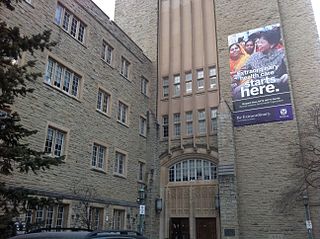
The Schulich School of Medicine & Dentistry is the combined medical school and dental school of the University of Western Ontario, one of 17 medical schools in Canada and one of six in Ontario.

Touro University Nevada (TUN) is a private university in Henderson, Nevada. It is part of the Touro College and University System. Touro University Nevada is a branch campus of its sister campus Touro University California.
Medical school in the United States is a graduate program with the purpose of educating physicians in the undifferentiated field of medicine. Such schools provide a major part of the medical education in the United States. Most medical schools in the US confer upon graduates a Doctor of Medicine (MD) degree, while some confer a Doctor of Osteopathic Medicine (DO) degree. Most schools follow a similar pattern of education, with two years of classroom and laboratory based education, followed by two years of clinical rotations in a teaching hospital where students see patients in a variety of specialties. After completion, graduates must complete a residency before becoming licensed to practice medicine.
Most physicians in the United States hold either the Doctor of Medicine degree (MD) or the Doctor of Osteopathic Medicine degree (DO). Institutions awarding the MD are accredited by the Liaison Committee on Medical Education (LCME). Institutions awarding the DO are accredited by the Commission on Osteopathic College Accreditation (COCA). The World Directory of Medical Schools lists both LCME accredited MD programs and COCA accredited DO programs as US medical schools. Foreign-trained osteopaths do not hold DO degrees and are not recognized as physicians in the United States or in other jurisdictions.
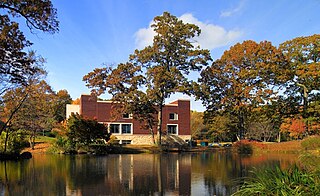
The New York Institute of Technology College of Osteopathic Medicine (NYIT-COM) is a private medical school located primarily in Old Westbury, New York. It also has a degree-granting campus in Jonesboro, Arkansas. Founded in 1977, NYIT-COM is an academic division of the New York Institute of Technology. Formerly the New York College of Osteopathic Medicine, it is one of the largest medical schools in the United States.

The Touro College of Osteopathic Medicine (TouroCOM) is a private medical school with a main campus in the neighborhood of Central Harlem in New York City and an additional campus in Middletown, New York. It is a division of Touro College and University System.

Rocky Vista University (RVU) is a private, for-profit medical school with campus locations in Parker, Colorado and Ivins, Utah. The school opened in 2006 as the only modern for-profit medical school in the United States although other for-profit schools have since opened. RVU's College of Osteopathic Medicine (RVUCOM) grants the Doctor of Osteopathic Medicine degree and admitted its inaugural class of medical students at the Parker, Colorado campus in August 2008.

Pacific Northwest University of Health Sciences (PNWU) is a private medical school in Yakima, Washington. Founded in 2005, the university's inaugural program was the first new medical school to open in the Pacific Northwest in sixty years. PNWU grants the Doctor of Osteopathic Medicine (D.O.) degree and graduated its first class of physicians in May 2012. It is accredited by the American Osteopathic Association's Commission on Osteopathic College Accreditation.
Doctor of Osteopathic Medicine is a medical degree conferred by the 38 osteopathic medical schools in the United States. DO and Doctor of Medicine (MD) degrees are equivalent: a DO graduate may become licensed as a physician or surgeon and thus have full medical and surgical practicing rights in all 50 US states. As of 2021, there were 168,701 osteopathic physicians and medical students in DO programs across the United States. Osteopathic medicine emerged historically from osteopathy, but has become a distinct profession.
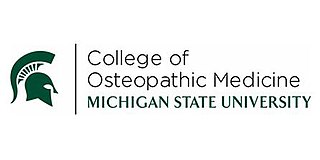
The Michigan State University College of Osteopathic Medicine (MSUCOM) is one of the two public medical schools of Michigan State University, a public land-grant research university in East Lansing, Michigan. The college grants the Doctor of Osteopathic Medicine (D.O.) degree, as well as a DO-PhD combined degree for students interested in training as physician-scientists. MSUCOM operates two satellite campuses in Clinton Township and Detroit. The college is accredited by the American Osteopathic Association's Commission on Osteopathic College Accreditation (COCA) and by the Higher Learning Commission.
The College of Osteopathic Medicine of the Pacific, Northwest, also known as COMP Northwest, is a non-profit, private medical school for osteopathic medicine located in Lebanon, in the U.S. state of Oregon. Opened in 2011, the school is a branch campus of Western University of Health Sciences' College of Osteopathic Medicine of the Pacific, and is operated in partnership with Samaritan Health Services. Graduates of the college receive the Doctor of Osteopathic Medicine degree. The university eventually plans to open additional colleges at the Lebanon campus.

The College of Osteopathic Medicine of the Pacific (COMP) is a private, non-profit medical school for osteopathic medicine located in downtown Pomona, in the U.S. state of California. The college opened in 1977 as the only osteopathic medical school west of the Rocky Mountains. COMP was the founding program of Western University of Health Sciences (WesternU), which now has 8 colleges in addition to COMP, each offering professional degrees in various fields of healthcare. COMP has a single 4-year program, conferring the Doctor of Osteopathic Medicine (D.O.) degree. Graduates are eligible to practice medicine in all 50 states and more than 85 countries.
Arizona College of Osteopathic Medicine (AZCOM) is a school of osteopathic medicine in Glendale, Arizona, part of Midwestern University. It grants the Doctor of Osteopathic Medicine (D.O.) degree.
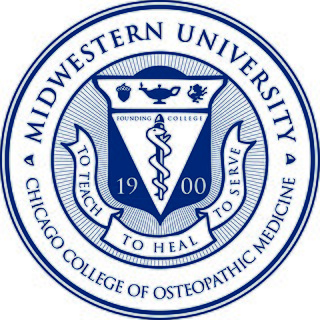
Chicago College of Osteopathic Medicine (CCOM) is the medical school of Midwestern University in Downers Grove, Illinois. CCOM grants the Doctor of Osteopathic Medicine D.O. academic degree and is accredited by the American Osteopathic Association's Commission on Osteopathic College Accreditation (COCA).
